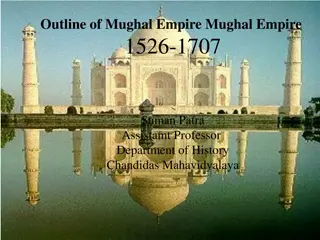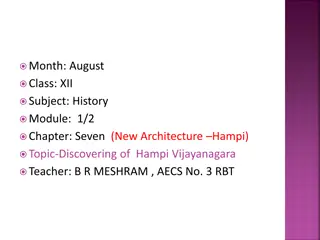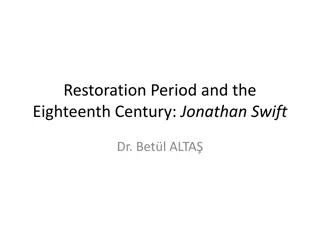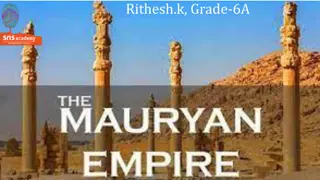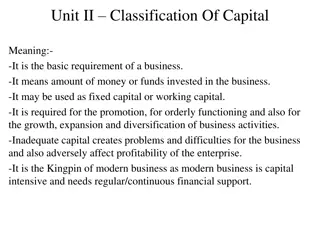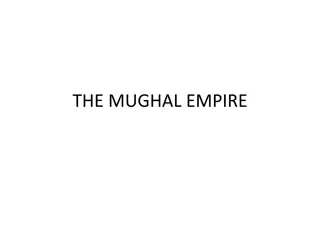Vijayanagara: The Glorious Capital of the Vijayanagara Empire
Vijayanagara, the capital of the Vijayanagara Empire, was established by Harihara and Bukka in 1336 on the banks of the river Tungabhadra. Known as Hampi, the city flourished under Krishnadeva Raya, boasting unique architectural styles, sophisticated water management systems, impressive fortifications, and a rich urban core. The royal center, with its numerous temples, played a crucial role in the rulers' authority and religious connections.
Download Presentation

Please find below an Image/Link to download the presentation.
The content on the website is provided AS IS for your information and personal use only. It may not be sold, licensed, or shared on other websites without obtaining consent from the author. Download presentation by click this link. If you encounter any issues during the download, it is possible that the publisher has removed the file from their server.
E N D
Presentation Transcript
Month: August Class: XII Subject: History Module: 2/2 Chapter: Seven (New architecture -Hampi) Topic- Vijayanagara: The Capital and its Environs Teacher: B R MESHRAM , AECS No. 3 RBT
REVISION- Vijaynagara or City of Victory was the name of both city and an empire. Harihara and Bukka establishment the Vijaynagara empire on the bank of the river Tungabhadra in the year 1336.Capital of Vijayanagar Empire was Hampi. Hampi is another name for Vijaynagara Empire. The name Hampi is derived from the local mother goddess, Pampadevi. It stretched from the river Krishna in the North to the extreme South of the peninsula . Golden era of Vijaynagara empire was under the rule of Krishnadeva Raya.
VIJAYANAGARA: THE CAPITAL AND ITS ENVIRONS- Vijayanagara was characterized by a distance physical and lay out and building style. 1.Water resources: The most striking feature about the location of Vijayanagara is the natural basin formed by the river Tungabhadra which flows in a North- Easterly direction. At this is one of the most arid zones of the Peninsula , elaborate arrangements had to be made to store rainwater and conduct it to the city.
2. FORTIFICATION AND ROADS: Abdul Razzaq , an ambassador sent by the ruler of Persia to Calicut in the 15thcentury was greatly impressed by the fortification and mentioned seven line of forts. These encircled not only the city but also its agriculture hinterland and forests . The outermost wall linked the hills surrounding the city. Abdul Razzq noted that between the first, second , third walls there are cultivated fields, gardens and houses.
3. THE URBAN CORE: Archeologists have found fine Chinese porcelain in some areas including in the north- eastern corner of the urban core and suggest that these areas may have been occupied by the rich traders. Tombs and mosques located here have distinctive functions yet their architecture resemble that of mandapas found in the temples of Hampi.
THE ROYAL CENTRE: The Royal centre was located in the South-Western part of the settlement. It included over 60 temple, the patronage of temple and cults was important for the rulers who were trying to establish and legitimate their authority thorough association with the divine housed in the shrines.
THE MAHANAVAMI DIBBA: Based on the form of the building as well as on their functions some of the structure have been assigned some name. The kings palace is the largest of the enclosure but has not yet used as royal residence. It has two place for 1. The audience hall 2. The Mahanavami dibba The Mahanavami Dibba is massive platform located on one of the highest points of the city Vijaynagara. Rituals associated with the structure probably coincided with Mahanavami.
LOTUS MAHAL: One of the most beautiful building in the royal centre is the Lotus Mahal. Named by the British travelers in the 19th century. While most temple were located in the sacred centre, there were several in the royal centre as well.
HAZARA RAMA TEMPLE: One of the most spectacular of these is one known as the Hazara Rama temple. This was probably meant to be used by the king and his family.
THE SACRED CENTRE: Choosing a capital: Temple building in the region had a long history going back to dynasties such as the Pallavas, Chalukays , Hoyasals and Cholas. Rulers very often encouraged temple building. The very choice of the site of Vijayanagara was inspired by the existence of the shrines of Virupaksha and Pampadevi.
VIRUPAKSHA TEMPLE: Virupaksha temple located in Hampi 350 km from Bangalore in the state of Karnataka. Virupaksha temple is the main centre of pilgrim at Hampi and has been considered most sacred place.
GOPURAMS AND MANDAPAS: Raya gopurams or royal gateways often dwarfed the towers of the central shrines and signaled the presence of temple from great distance. They were also probably meant as reminders of the power of the kings, able to command the resources, techniques and skills needed to construct these towering gateways. The Virupaksha temple was built over centuries while inscriptions suggest that the earliest shrine dated to the nine-tenth centuries. It was substantially enlarged with the establishment of the Vijayanagara empire.
VITTHALA TEMPLE- The principle deity of temple was Vitthala a form of Vishnu generally worshiped in Maharashtra. A characteristic feature of the temple complexes is the chariot streets that extended from the temple Gopurams in straight line.
PLOTTING PALACES, TEMPLES AND BAZAARS: in 1976 , Hampi was recognized as a site on national importance. Then in the early 1980s an important project was lunched to document the material remains of Vijayanagara in detail through extensive and intensive surveys, using a variety of recording techniques. John M Frinz, George Michell and M S Nagaraja Rao, who worked for years at the site. They wrote in our study of these monuments of Vijayanagara we have to imagine a whole series of vanished wooden elements- columns ,brackets, beams ceilings, and towers decorated with plaster and painted perhaps brightly.
ASSIGNMENT: Explain how the people of Vijaynagara obtained water for their needs? Explain the role of royal centre played in the social and political life of Vijaynagara? What was the battle of Rakshasi Tangadi? Who were Amara -Nayakas ? Mention any two features of the Hazara Rama temple in Royal centre?





